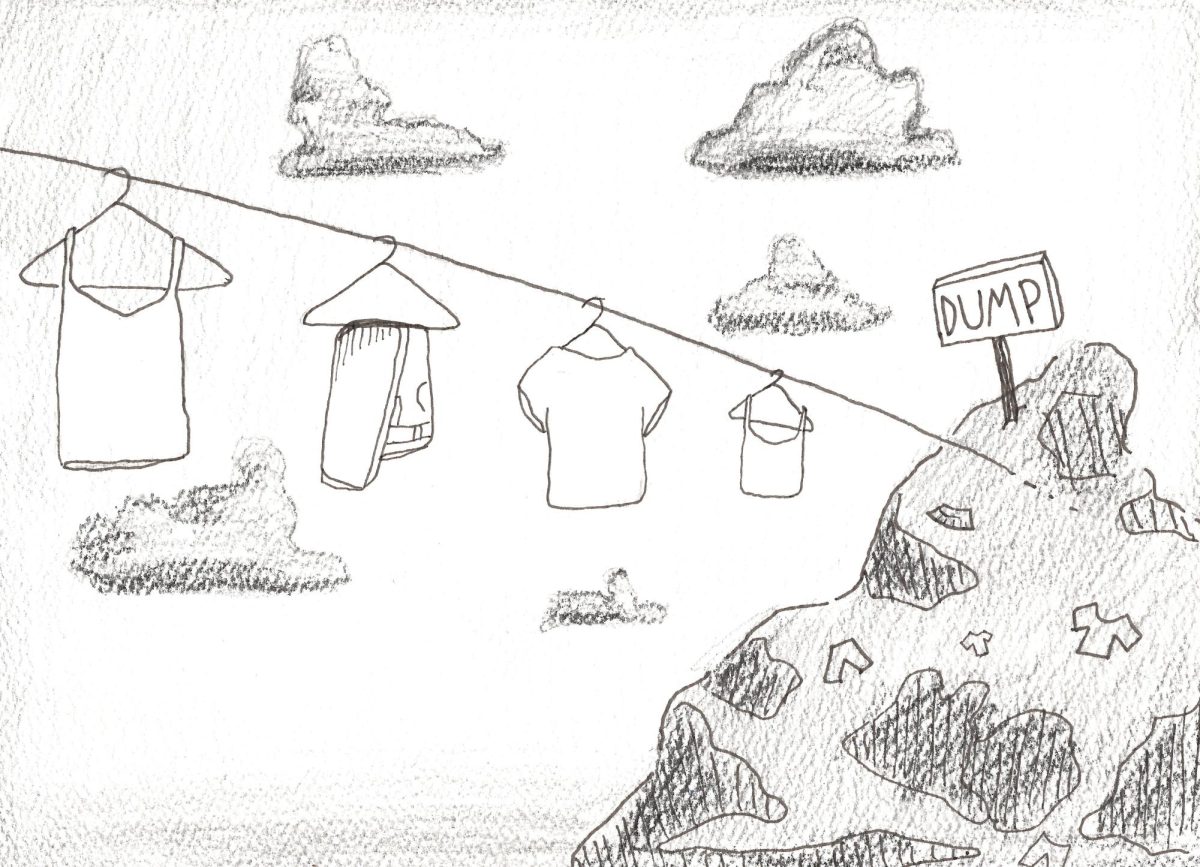Fast fashion has been a significant method for clothes shopping for over 20 years and has continued to be a trend among youth and consumers, but what goes unnoticed is the destructive impacts it has on our environment overall. Fast fashion is designed to efficiently mass produce the latest clothing trends, bringing in the most profit to the producer and being convenient toward the buyer.
Although it has a very large online presence, widely available and accessible in person and online, those conveniences often come with underlying harmful effects on the planet.
Many people happily take advantage of cheap clothing, not aware of the negative effects fast fashion holds.
Many fast fashion companies such as Shein, Temu, and Brandy Melville all have websites a good alternative to in-person shopping for people who are often busy or unable to make the commute.
However, the recurring problem with fast fashion is the carbon emissions and water that is used for clothing production.
I have first hand experience with how enticing the advertisement can be from those companies, knowing that their promotions are aimed towards teenagers and young adults. With all of their appealing ads about the so-called good quality, low prices, and wide accessibility, they make it difficult to ignore what they are offering. With these encouraging reasons to purchase from their stores, it is easy to overlook the negative impact they have on the world.
According to Earth.org, a study done by the UN Environment Programme, the fast fashion industry is the second biggest consumer of water and is contributing 10 percent of carbon emissions around the world.
Even the production of simple clothing is so harmful to our environment that it pollutes the air more than maritime and international air shipping combined. In addition to tolls taken on the environment from production alone, people have been purchasing much more than they need, leading to many clothes being piled in landfills. Well-made clothes are meant to be recycled by their consumers, and made to last for years, but fast-fashion consumes society with the latest trends, causing their old clothes to go to waste.
Over time this aspect has become an increasing problem. According to an article published by the World Resources Institute, the average clothing consumer purchased 60% more clothing in 2014 than consumers in 2000 but only kept each piece of clothing for half as long.
Consumers are not the only problem though. Companies shipping and supplying the clothing to their customers are the ones creating the products and using materials that can earn them the most profit but cost them the least for production.
Many people should start considering other strategies for clothes shopping in order to improve the overall economic status of our planet. These alternatives include secondhand shopping, making your own clothes, and most importantly making sure you recycle and rotate your wardrobe and get the most out of each piece of clothing.



